What is Turmeric Root – How to check for Turmeric Quality
The golden spice could be the most effective nutritional spice. We’ve all heard about super foods, nutrient-rich ingredients, and medicinal properties in herbs and spices. At the end of the day, food is medicine. We’ve known this for thousands of years, and civilizations worldwide have used all kinds of plant-based remedies not only to treat maladies but to prevent disease and promote healthier lifestyles. Traditional medicine is the base of modern medicine, and it wasn’t until recently that the scientific community began paying attention to food’s health claims and clinically proving many food benefits. Now we know that active compounds in food can prevent and even cure certain diseases.
What scientists didn’t expect is that some foods are not only healthy but beneficial for us at many levels, healthier than any modern medicine. At the forefront of these extremely healthy foods is turmeric, we’re sure you know this already; it’s commonly found as an orange-hued powder that gives its color and lovely aromatics to Indian curries. When we say turmeric, we’re often talking about the root of the plant, which is harvested, dried, and powdered for culinary and medicinal uses. But what is this yellowish spice? And why is everyone talking about it? Here’s all you wanted to know about this root, the spice that has taken the world by storm.
How to check for Turmeric Quality?
We checked multiple sources to determine the best way to check for quality of your turmeric. Here are a few ways for you to try
Water Test
Step 1: Warm water in a see through glass
Step 2: Sprinkle turmeric powder on top
Step 3: Wait for around 20 minutes
Results: If it sinks all the way to the bottom and water is crystal clear then you got some good quality turmeric. If the water turns cloudy then it might not be pure.
Root Test
Step 1: Place turmeric root in a paper towel
Step 2: Pour some water on it
None
Results: If you see it bleeding color then it could be impure which is a result of polishing or other potential quotings to give it a appealing look.
What is turmeric root?
Turmeric is a flowering plant found in India and Southeast Asia, and it’s also known as Curcuma longa and Haldi in India. Both India and Thailand have over 40 different turmeric subspecies, which makes experts believe the plant is native to the area.
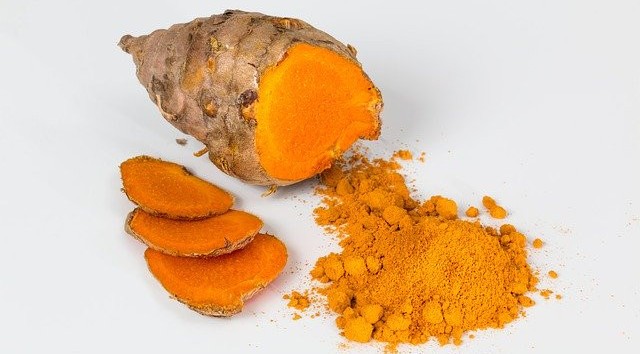
The plant is related to ginger and has a similarly large rhizome root. It’s this rhizome that is harvested and used fresh or boiled and grounded into a colorful powder. Some experts say turmeric was first a cloth dye because such a bright and intense color is hard to find in nature. The colorful spice soon found its way to the kitchen for its warm, spicy taste and became a vital element of the classical Indian medicine Siddha or Ayurveda.
Today, turmeric is one of the most popular spices around the world. It is a natural coloring agent in the food industry, is ever present in Indian and Asian cuisines, and is now recommended as a powerful natural alternative medicine.
What is turmeric used for in cooking
Common cuisine for this spice is Asian. But some people use a little in everything. It’s the main spice in Curry. Turmeric is used to flavor or color curry powders, mustard, butters, and cheeses. Turmeric root is also used widely to make medicine. It contains a yellow-colored chemical called curcumin, which is often used to color foods and cosmetics.
Health Benefits of Turmeric Spice
The active compound in turmeric is curcumin, and it’s behind all the health benefits associated with the spice. Some of the most common benefits are relieving common cold symptoms, including congestion, runny nose, and sneezing while it could also have a positive impact on our circulatory system; some studies show that consuming turmeric can lower triglyceride levels in the bloodstream and diminish fat in the liver.
Studies have shows that it has major benefits. Staple of Ayurveda medicine. As per Medical News and others the benefits are as follows:

Pain Relief
Anti-inflammatory properties
Improving liver function
Possibly reducing the risk of cancer
Digestion, prevent heart disease
Increases the Antioxidant Capacity of the Body
May help improve Memory
Turmeric could have benefits relating to stress i.e. curcumin can reduce the risk of depression, dietary fiber can lower stress and help with high blood pressure. Perhaps the most studied effect on our bodies is its anti-inflammatory properties.Menstrual pains can be relieved, and so is joint pain and muscle soreness. Chronic inflammation is linked with several types of cancer, so consuming turmeric often can reduce the risk of developing such cancers.
Menstrual pains can be relieved, and so is joint pain and muscle soreness. Chronic inflammation is linked with several types of cancer, so consuming turmeric often can reduce the risk of developing such cancers. The best way to comsume turmeric is in food as part of a balanced diet, but you can also enjoy its benefits as capsules with the right ingridients.
What are turmeric’s side effects?
The U.S. Food and Drug Administration has recognized turmeric as generally safe, and when added as a spice to foods, it’s unlikely to cause adverse effects. However, too much turmeric side effects could be Nausea, Diarrhea, Headaches, to name a few as written on everydayhealth and published in BMC Complementary and Alternative Medicine*reported a range of adverse events from taking 500 to 12,000 mg of curcumim.
Turmeric can lower testosterone levels in men, as curcumin acts like the estrogen hormone in our bodies.
For people with diabetes, turmeric can lower blood sugar and might slow blood clotting.
Since curcumin can prevent iron absorption, avoid large doses if suffering from iron deficiency.
Turmeric uses in Gastronomy
Turmeric’s warm, mustardy and spicy flavor made it popular in the kitchen. It’s now a critical ingredient in dishes as famous as the yellow curry, chicken biryani, the Moroccan harira soup, and even in the fashionable turmeric latte.
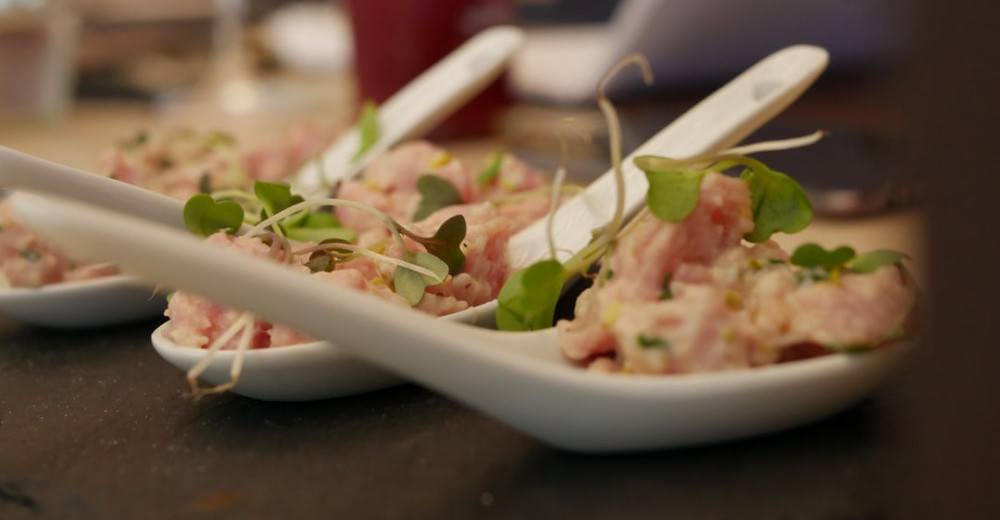
Simple recipes with turmeric powder are readily available and seen more often, but cooking its root is easy too, the fresh root is milder and slightly sweeter. Indian and Thai curries are some of the most common cuisines that use turmeric powder, but there are many healthy recipes that incorporate this spice.
Smoothies, soups, milkshakes, salad dressings, stews, marinades, and broths, turmeric is incredibly versatile and has gained popularity in western cuisines too, you can’t beat its taste and color. If you’ve never cooked with turmeric, try a classic recipe like turmeric chicken with basmati rice, or cook with yellow curry paste, it’s mostly turmeric.
Getting your hands on this spice and adding it to your food can help you understand its taste profile, as you experiment with different dishes and distinct quantities. Cooking with this spice is not only tasty but healthy and learning to master the spice is deeply satisfying.
Turmeric, Amongst the Finest Spices on Earth
In our opinion, Turmeric is tasty and healthy. It lies between the realms of gastronomy and medicine. The good news is that you don’t have to choose sides, you can enjoy its flavor and health benefits at the same time.
Take it as a supplement or use it as a staple ingredient in your kitchen but make it part of your life; it will nurture you and heal your mind and body.
Turmeric Nutrition Data
A seen on medicalnewstoday, according to the United States Department of Agriculture (USDA) National Nutrient Database, one tablespoon (tbsp) of turmeric powder contains:
- 29 calories
- 0.91 grams (g) of protein
- 0.31 g of fat
- 6.31 g of carbohydrates
- 2.1 g of fiber
- 0.3 g of sugar
- 1-tbsp serving provides:
- 26 percent of daily manganese
- 16 percent of daily iron
- 5 percent of daily potassium
- 3 percent of daily vitamin C
Does Turmeric Cause Bleeding?
As per webmd do not use turmeric if you have gallstones or a bile duct obstruction. Taking turmeric might slow blood clotting. This might increase the risk of bruising and bleeding in people with bleeding disorders. Curcumin, a chemical in turmeric, might decrease blood sugar in people with diabetes.
As quoted on *Alberta Rhematology(1), Turmeric may reduce the amount platelets clump together (platelet aggregation). It may interact with anticoagulant/antiplatelet drugs by increasing risk of bruising and/or bleeding.
Turmeric and Skin Care
Here are some ways this spice may benefit your skin, as seen on healthline.
- Turmeric contains antioxidants and anti-inflammatory components. It contains properties that contribute to a natural glow.
- The curcumin found in turmeric can help wounds heal by decreasing inflammation and oxidation.
- It may help with Acne scarring. It may help with a range of other dermatological condition
Side effects on skin varies from person to person. As quoted on *drugs.com, get emergency medical help if you have signs of an allergic reaction, hives, difficulty breathing, swelling of your face, lips, tongue or throat.
Best place to shop for Turmeric
Commercial quality ground version is often found in all supermarkets and online. Turmeric root is mostly available at all Indian and Asian food specialty stores and markets.
Ready-made Indian mixed spices have a large percentage of turmeric, and curry pastes rely on the rhizome too. There are many naturally flavored turmeric snacks on the market, from energy bars to chips and milkshakes, and that’s only the beginning, it is gaining popularity at an amazing speed. Check out – 100% raw Organic Turmeric root powder option to Buy
Highly Rated DIY Turmeric Skincare Recipes
This is regulary updated as and when people update their comments/opinions
IMPORTANT ⚠️
🌸Will it stain the skin ?
NO! This mask will not stain the skin. Roasting turmeric avoids that.
In case there is staining of any sort, wipe face with a cotton dipped in cold milk. Any staining should be gone.
🌸 How to prevent turmeric from burning?
Keep the flame very slow. As soon as its color starts changing turn off the stove. The utensil will be still warm and will keep roasting the turmeric slowly.
🌸Anything I should be careful about?
Yes! Please use a heavy bottomed, heat proof utensil.
🌸 How often can I use this?
This can be used daily, preferably in the evening.Personally I would suggest starting with twice a week and building up to alternate days. Don’t overdo anything 🥰
🌸Does it even the skin tone out?
Yes!! With regular use this gives even tones glow to the skin and helps clear out pigmentation.
🌸Does this help with acne?
Yes! It is extremely beneficial for mild to moderate acne or pimples.
🌸Is it suitable for all skin types?
Yes it’s suitable for all skin types. Still do a patch test behind your ear and see the reaction for 24 hours.
🌸What are the benefits?
👉🏽Reduced acne, clogged pores, breakouts and blackheads.
👉🏽Skin will be hydrated and glowing
👉🏽Less visible wrinkles
👉🏽Lighten dark spots and acne scars
👉🏽Reduced redness and a brighter skin tone
Do share your results with me🤗
.
.
.
.
.
#diyskincare #organicskincare #skincaretips #cleanbeauty #diyskincarerecipes #beautytips #naturalbeauty #organicbeauty #skincareroutine #naturalskincare #diybeauty
#beautydiy #beautycare #beautyhacks #beautyhack #beautybloggers #skincaretips #beautyvideos #beautytips
Simple DIY UBTAN MASK for Brides to be 💛
Save for Later Beauties ❤️
Use it thrice a week for a month or two and you’ll see amazing results. 🪄
Just remember to not scrub, just rinse off with water and continue with your skincare routine.
Orange peel powder is packed with Vitamin C thus giving you a brighter complexion by evening out your skin tone and reducing pigmentation. Turmeric has healing & brightening properties while raw honey will make your skin moisturised and glowing.
.
Please note that this Ubtan will show great results if you use it religiously and please do a patch test first in case your skin might be allergic to some of the ingredients.
Don’t forget to Follow me yourstrulyhaadiya for more skincare tips ✨💫
.
.
#naturalskincare #organicskincare #skinbrightening #diyskincare #naturalskincareroutine #facepack #glowingskinisalwaysin #naturalskincaretips #indianskincare #glowingskintips #skincareindia #diyfacemask #effectiveskincare #ubtan #diyskincarerecipes #turmericfacemask #orangepeelpowder
DIY FACE MASK FOR ACNE FREE,GLOWING SKIN🥺
.
INGREDIENTS:
2 tsp gram flour
1 tsp turmeric
2 tsp yogurt
1 half tsp honey
1 tbsp rose water
————————————————————
This mask helps fight acne, clear dark spots, reduce wrinkles , age spots, dullness and brightens the skin.
.
Keep it until it dries then wash it off with water
.
Try this mask twice a week for good results
.
.
.
#explore#explorepakistan#skincare#diyskincarerecipes#pakistaniwedding#pkaistanifashion
** Any and all information on this website is for information pruposes only and is not intented for the purpose of providing medical or any other advice. Please use at your own risk**.
*(1)https://albertarheumatology.com/natural-health-products/turmeric/
*(1)https://dearcrissy.com/diy-turmeric-and-honey-face-mask/
*(2)https://www.karissasvegankitchen.com/oatmeal-turmeric-face-mask/
*(3)https://www.Instagram.com/p/CAS4UcIhGCC/?utm_source=ig_web_copy_link
*(4)https://www.drugs.com/mtm/turmeric.html

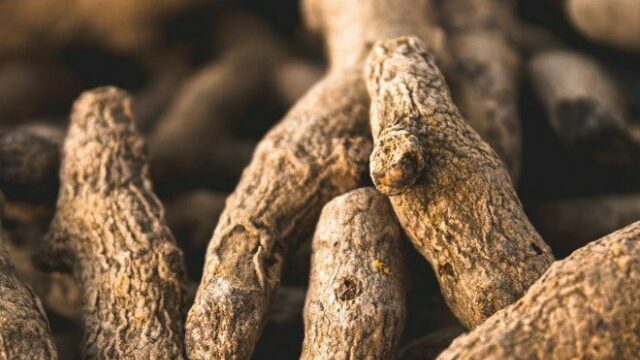


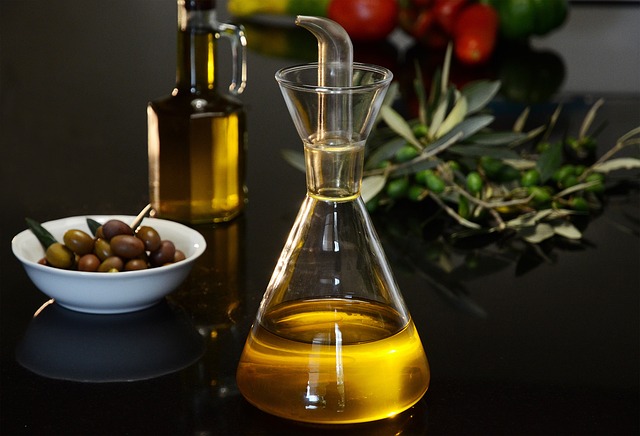
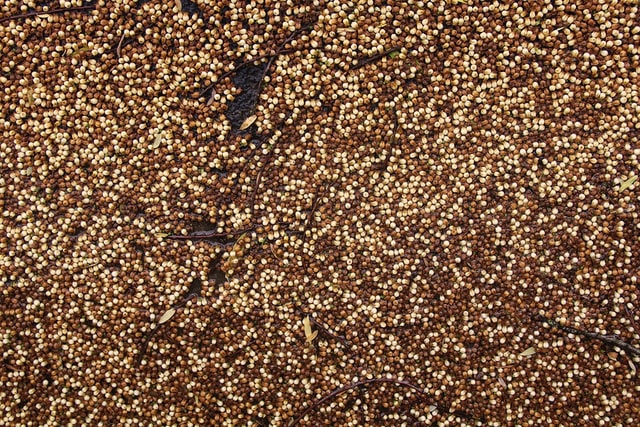
Thank you for an extremely informative post on what is turmeric. I had never known that one could check the quality of turmeric, so I will certainly be trying it. I have been aware of the anti-inflammatory properties of turmeric, but you have mentioned many more, which is great to see.
I currently use an organic turmeric powder and often have a teaspoon full in hot water as a drink first thing in the morning. So I am wondering if it is better to use cold or tepid water, rather than hot water and if boiling water might destroy some of the beneficial properties?
Thanks for feedback. I dont think turmeric hot water was make a material difference as its often used in cooking so I would assume that its fine. Infact, Turmeric cold water would be more challenging as it might not fully get dissolved. We we will research and update this on the side. Cheers.
Thanks for the article. It is chock full of actionable information.
I take turmeric every day in liquid form. There are 2 reasons I do. 1) the anti-inflammatory qualities, and 2) the high concentration of anti-oxidants.
But I learned a ton from your article. Most of what you wrote I did not know and I’ll have to try a few of those things. Tonight I’m going to use the steps you outlined for determining how good, or not, the quality of the turmeric we have is.
QUESTIONS:
I’ve heard that there are 2 things that improve the efficacy of turmeric. 1) Pepper, and 2) COQ10. Do you know if either or both of those things are true? Turmeric is such an effective anti-inflammatory. If I could put a turbo-charger on it with a little pepper or COQ10 I would.
My wife and I both like turmeric in a couple of things she cooks. I’m wondering if you or your wife can recommend any place to get good Middle Eastern recipes using turmeric?
Thanks in advance for responding to my questions.
Glenn
Hi Glenn – With just 1/20 teaspoon or more of black pepper, the bioavailability of turmeric is greatly improved, and turmeric’s benefits are further enhanced. As quoted on https://www.umassmed.edu/nutrition/blog/blog-posts/2019/6/using-black-pepper-to-enhance-the-anti-inflammatory-effects-of-turmeric/
Additionally, we have a much curated recipes page https://spicesforfoods.com/fusion-food-recipes/
We use a little turmeric in most of recipes.
Great article about turmeric and its properties. My wife is from the middle-east and is using turmeric quite often in our meals. I enjoy it quite immensely. But what I have to watch out for is the effect of reduced testosterone. Also, the fact that it can prevent iron absorption. These two effects were effects I was not aware of. It is important to have a balanced diet whatever ingredients you use in your cooking. Too much of one thing can lead to other effects you don´t really want.
I like the list you have over possible health benefits, but it is important to check with your physician before you start to use turmeric in your daily diet. You have properly highlighted this as well in your article
Interesting food facts! I’ve cooked with it, eaten curry dishes that apparently have some in them, and I know I’ve had it a couple of other ways over the decades. But I really didn’t know the real source or varieties. I also didn’t know of the medicinal qualities. However, that isn’t surprising. So many flavorful herbs and plants have those qualities, hence our taste for it. Perhaps our bodies are telling us something when we like something so natural. Turmeric is usually in the cabinet, but I honestly have rarely used it unless some recipe called for it. But now I’m motivated to try a few dishes with it and to see how it can be applied medicinally for my health.
Thanks for the informative post!
Darrin
Thankyou Darrin. Our goal is to make everyone aware.
Hi and thanks for this excellent review of turmeric curcumin. Tumeric has been one of my favorite spices since I was a student cooking for myself and my housemates. One thing I never fully understood was what are the other ingredients in regular curry powder that make curry spicey. I say that because I always found that turmeric has a very mild non-spicy or at least cool spicy and not hot spicy flavor. I’ve tried on separate occasions to compose something like a curry powder from turmeric, cumin, and whatever else I could find but I have never succeeded. There is always something missing. I’ve also started drinking turmeric herbal teas for inflammation. And here is a secret I will share – turmeric makes an excellent added ingredient in guacamole. Just slip a small teaspoon in, don’t tell anyone and ask if they can tell what is the secret ingredient. Best regards, Andy
Great to hear your experience. Thank you much